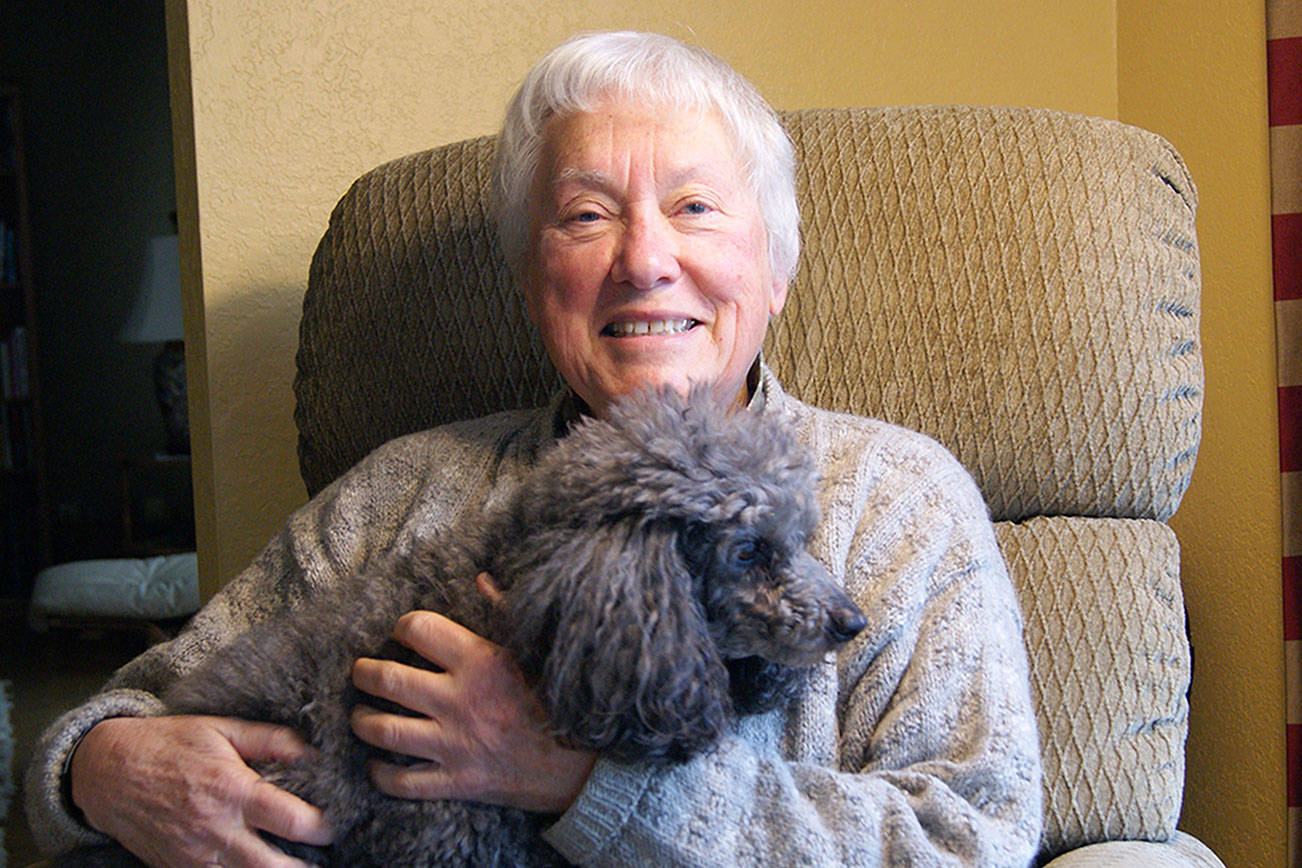Despite misconceptions, women served in Vietnam, alongside men.
They mattered, and they worked just as hard. That’s what Whidbey veteran Jill Johnson wants people to know.
Johnson, a Langley resident, recently returned from a trip to Washington, D.C. to visit the Vietnam Women’s Memorial at its 25th anniversary celebration.
“Lots of people don’t know. They don’t even think there were any women at all in Vietnam,” she said. “There were 11,000 military women in Vietnam; many of them were nurses.”
The statue depicts three bronze figures. One woman is standing and looking for a rescue helicopter, Johnson said, the second woman is seated cradling a GI in her lap and the third woman holds the GI’s helmet in her hands.
“All of us (at the ceremony) were standing around the statue with candles and singing,”Johnson said. “It was a very powerful moment.”
The fact that the statue stands at all today is an accomplishment and hard-fought battle in itself.
“The story of how that came to be is quite amazing,” Johnson said.
Diane Carlson Evans was the person who first came up with the concept, after seeing monuments established for veterans but none that highlighted women’s achievements.
“She looked around and said, ‘where are the women?’” Johnson said. “So, she decided to get something there.”
It took over 10 years, a path that faced resistance from the public, military and politicians.
Evans found an artist, Glenna Goodacre, to design the monument. On Nov. 11, 1993, their vision became a reality.
“The perception, even in the military, was that there weren’t very many women — that if there were any, that there were only a few of them,” Johnson said. “It was only when women veterans stood up and said ‘wait a minute’ … They didn’t give up.”
At the anniversary, veterans shared stories of courage, inspiration and friendship.
She met a man who was moved to tears, finding the name of his friend inscribed on the Vietnam Veterans Memorial Wall.
She had her own names to locate.
“One woman who spoke talked about how the memorial helped her return to sanity,” Johnson said. The veteran had faced shrapnel injuries and witnessed death, but she had “stuffed it down,” eventually becoming suicidal before recovering.
“I remember finding out about my commanding officer’s (death.) You don’t have time to grieve, you just keep going,” Johnson said. “And I’ve lost other men too … you have work to do, so you stuff it and you keep going.”
But that grief is expressed in the statue, and even despair, Johnson said, and it shows the exhaustion women faced working 12-or 15-hour days constantly.
“There’s no false bravery; it’s just this raw emotion and grit. I knew women like that…The statue shows the grit that kept them going.”
But they had good times too, Johnson added.
“Oh my goodness, we had great times. So, it was fun to relieve all of that.”
She’s glad the sculptress was able to capture the essence of what the young women did, she said.
“And most of us were very young,” she said.
Johnson was in her mid-20s when she signed up for the military. She was a middle school teacher in California, and while she loved it, she had always wanted to travel.
She saw an advertisement from Army special services advertising open posts in Europe. But by the time she interviewed, those posts were filled.
“Then,” Johnson said, “she talked about this place called Korea. She was frank with us; she said this is a hardship post,” Johnson said. “This is not going to be glamorous. But you’ll have plenty of money, lots of possibilities, you’ll have a real chance to test your own skills and endurance.”
“If that sort of thing appeals to you, give it a shot.”
Johnson said she thought that sounded neat, so she signed up.
Johnson served for a year in Korea and a year in Vietnam, first as a program director of special services and the latter year as service club director.
The service clubs were places for the men and women to “get away from the war,” Johnson said. They could play pool, instruments, write letters home or sit and talk.
In Vietnam, her job was to build a service club at one location for the first time.
The skills she learned in those two years have served her well throughout her life, she said, including how to make something out of nothing.
Her most recent trip to the Women’s Memorial was done at the request of a colleague and friend who couldn’t attend.
“But I was going for myself too,” she said. “I feel very strongly about that statue. It means a lot to me.”
“There was initially a lot of resistance to that statue… but now there’s a great deal of affection.”
She wasn’t in uniform, but many people asked her if she was a veteran and thanked her for her service during her visit, which touched her, she said.
“When we first got back, there was a great deal of negative stuff going on. I was called a baby killer,” she said. “But that weekend, it was a totally different picture…it brings a kind of closure when people acknowledge that A, you were there and B, you did something useful.”
The weekend was special because it was dedicated to women, she said.
“We did work, we faced some of the same dangers and stresses that the men did, we did something useful,” Johnson said. “I think its important that people know that.
“And that statue communicates that beautifully, without a lot of grandstanding or fanfare or blowing trumpets or any of that stuff.”
“It just says, ‘We were there. We served too.’”



